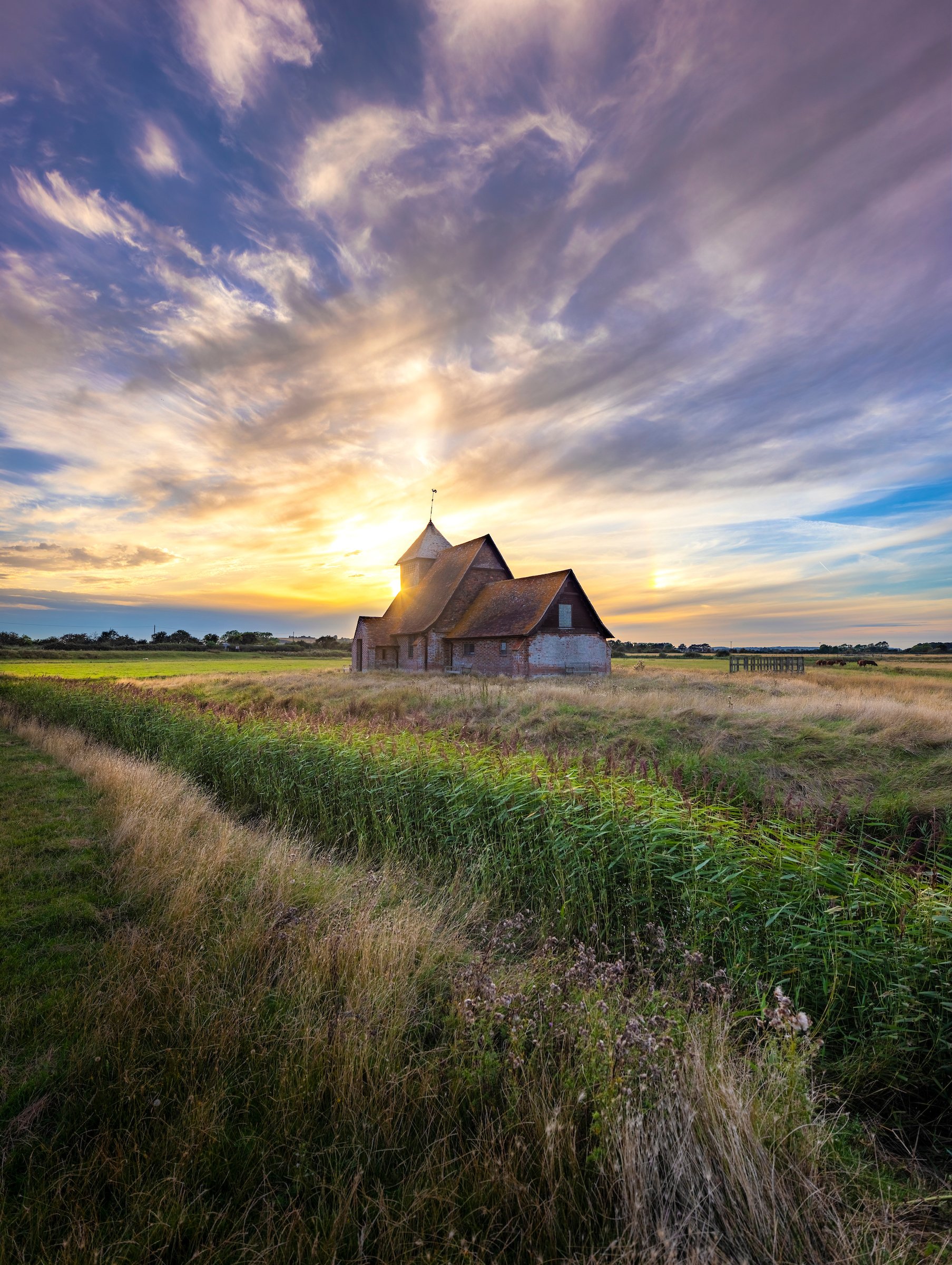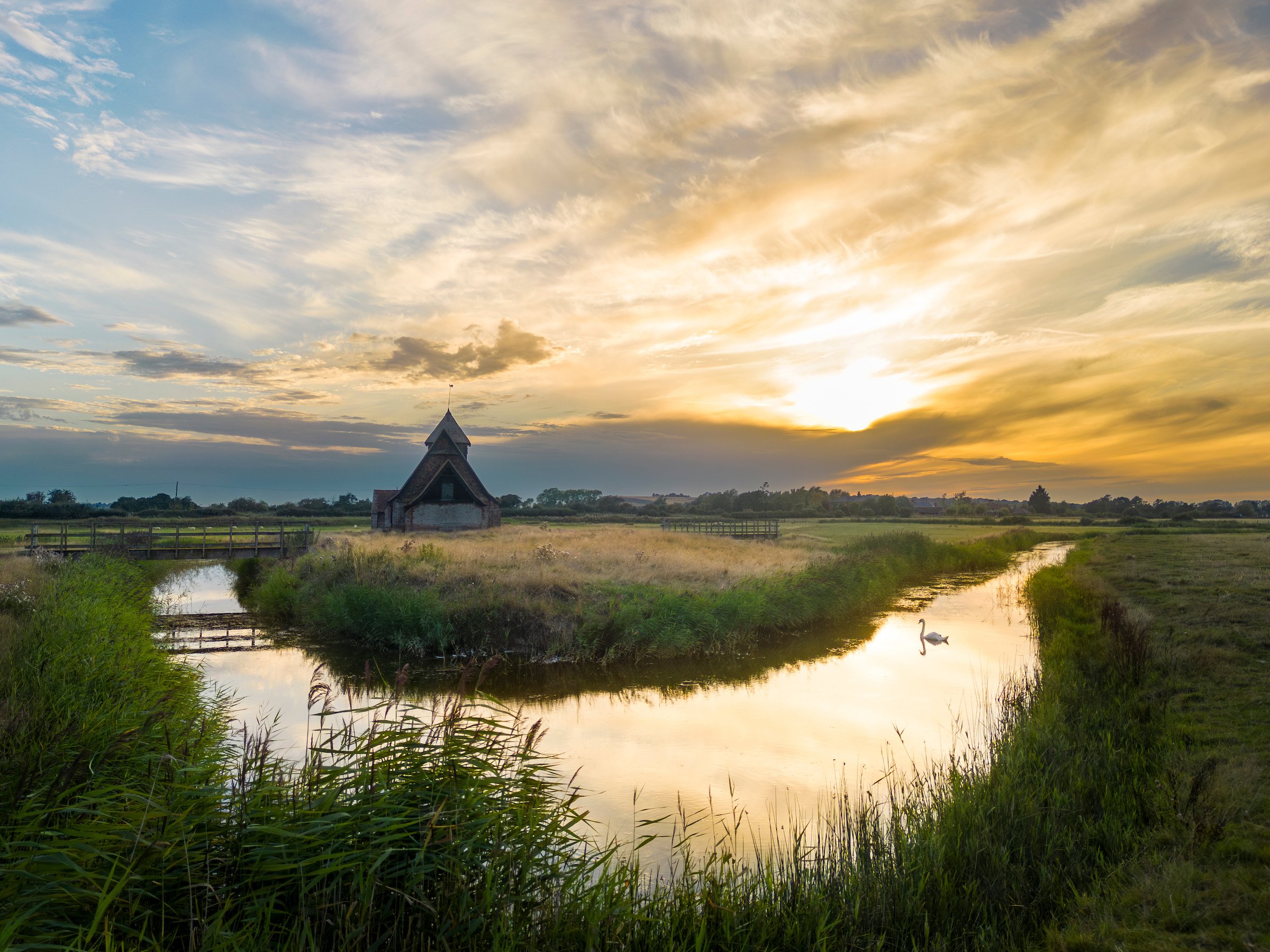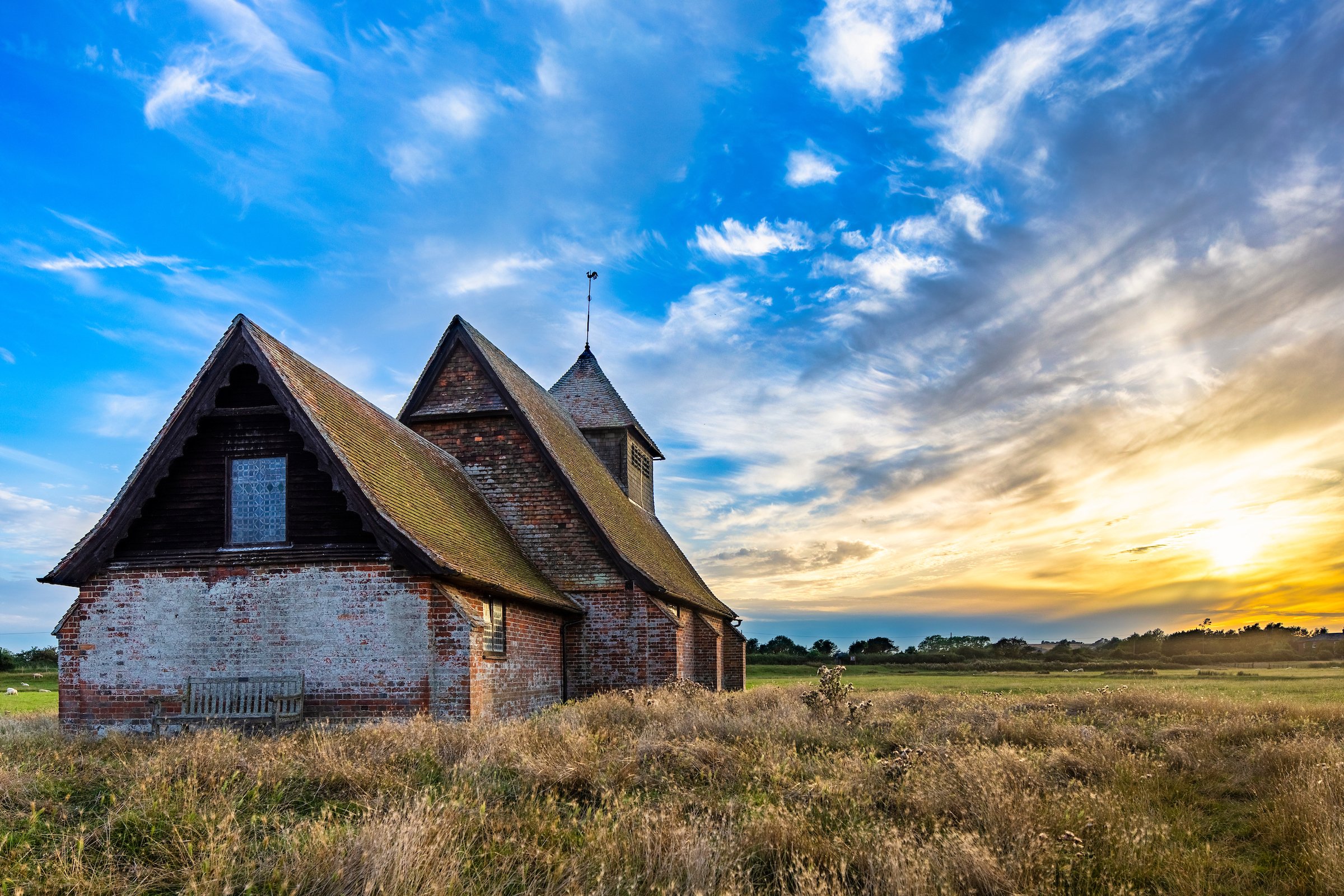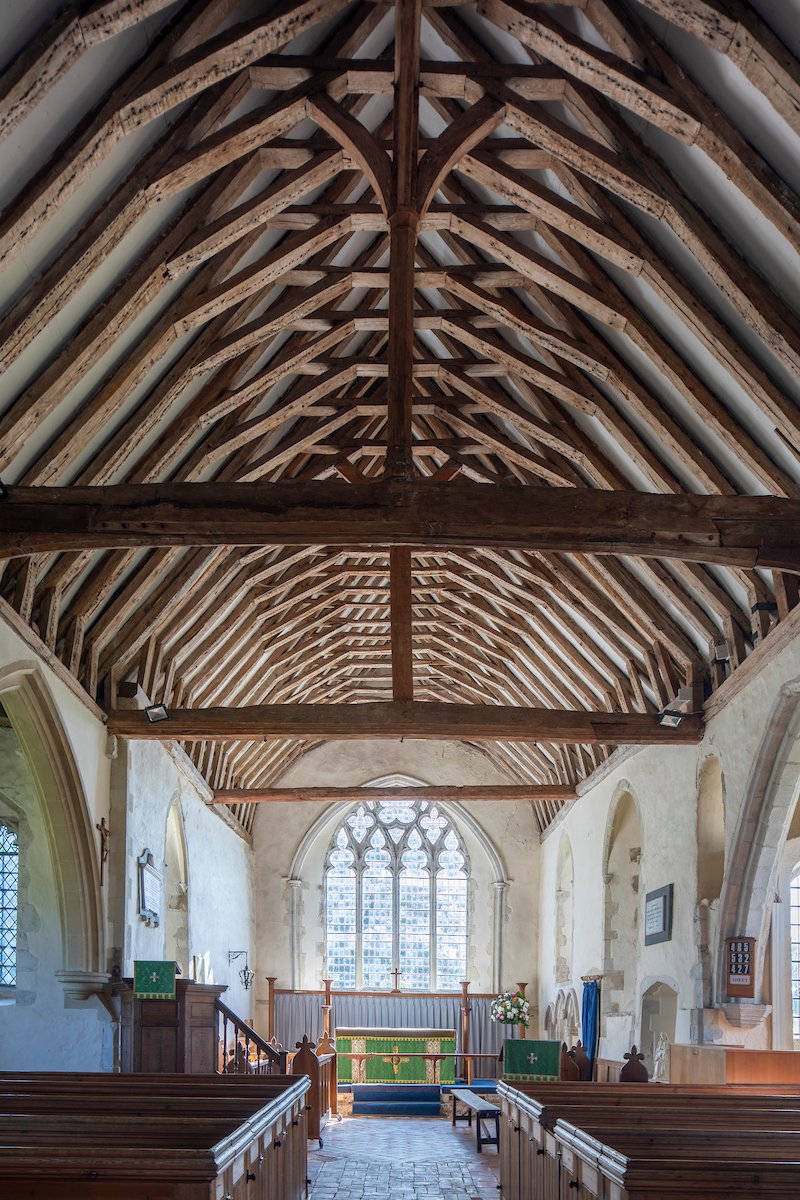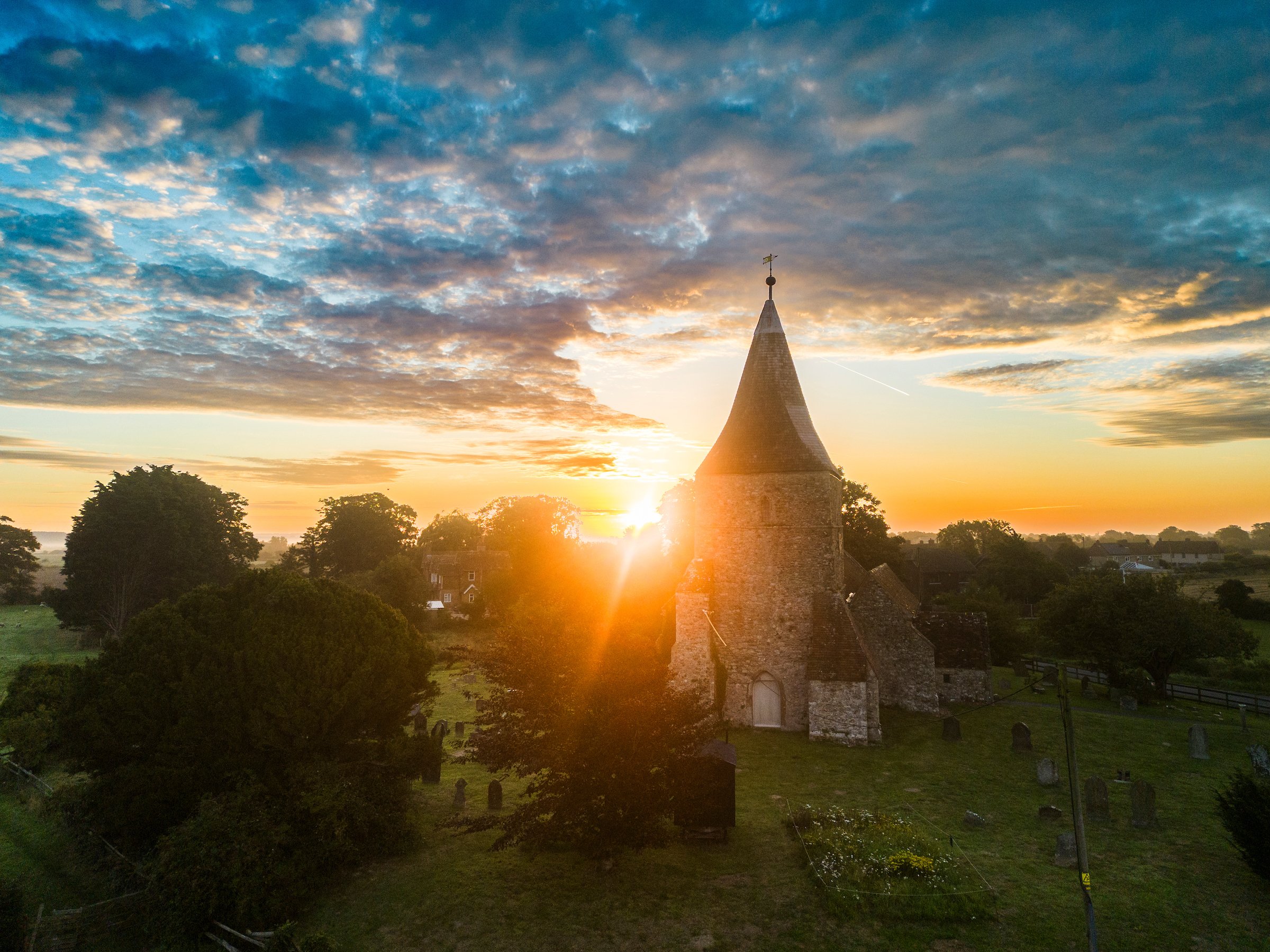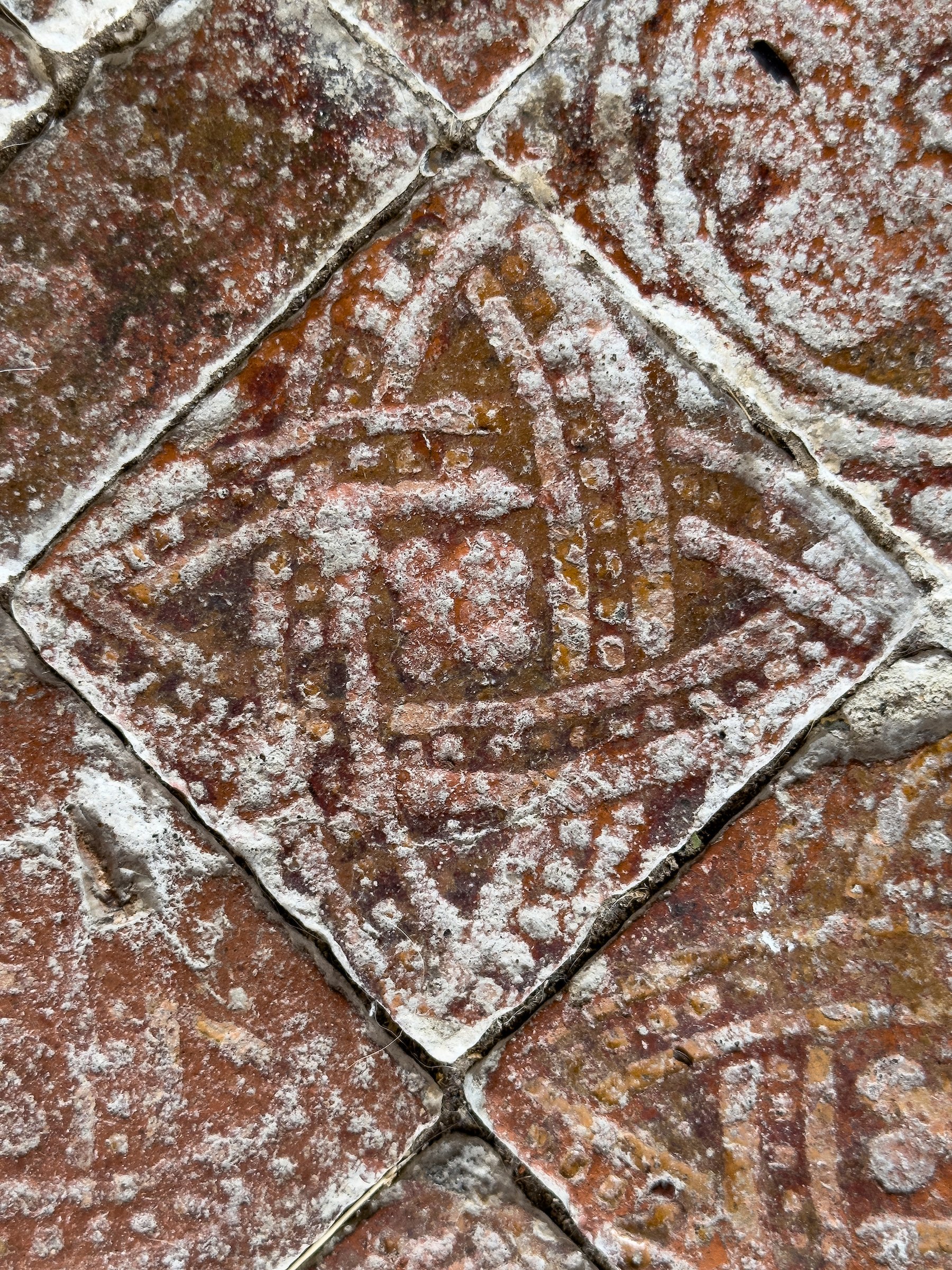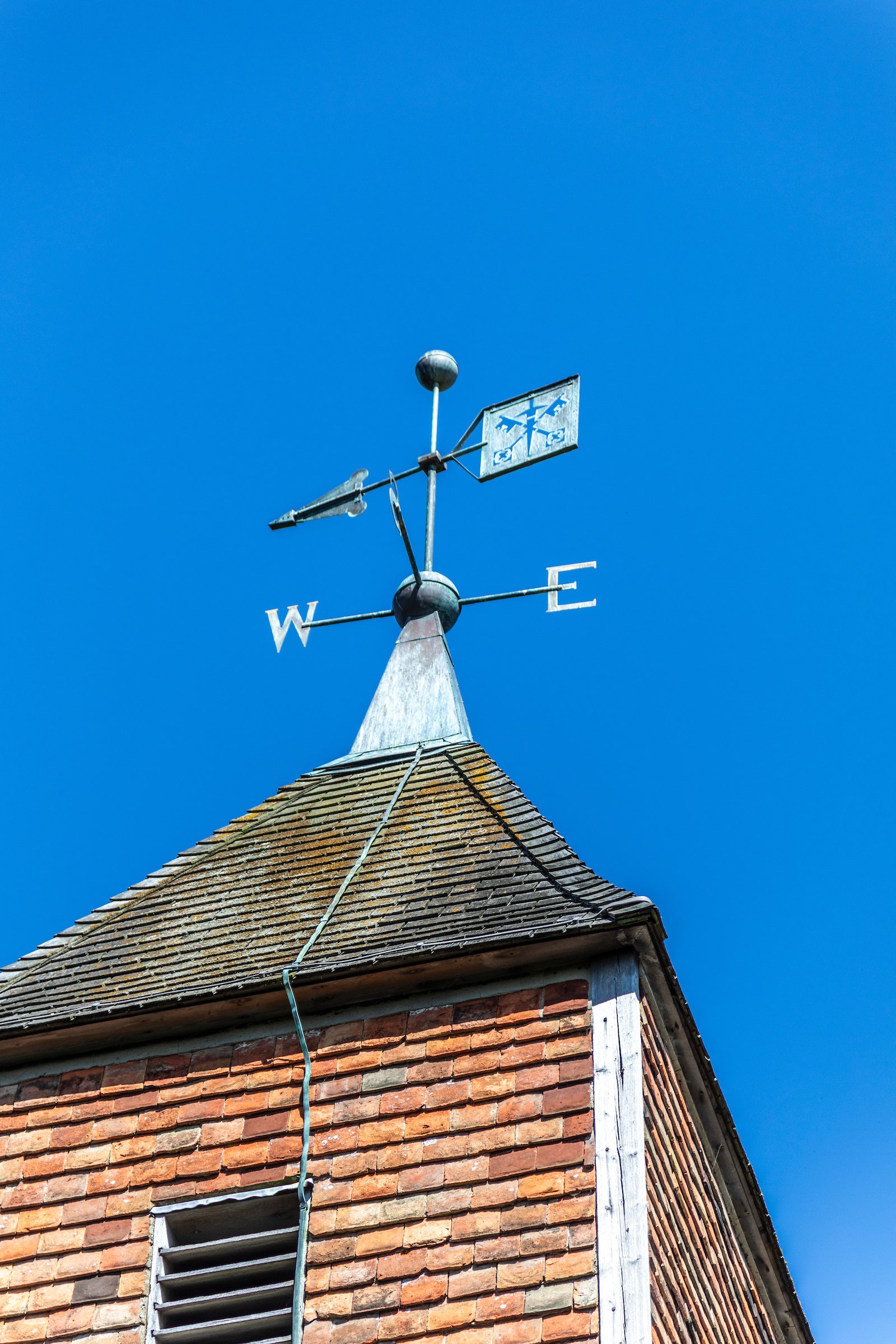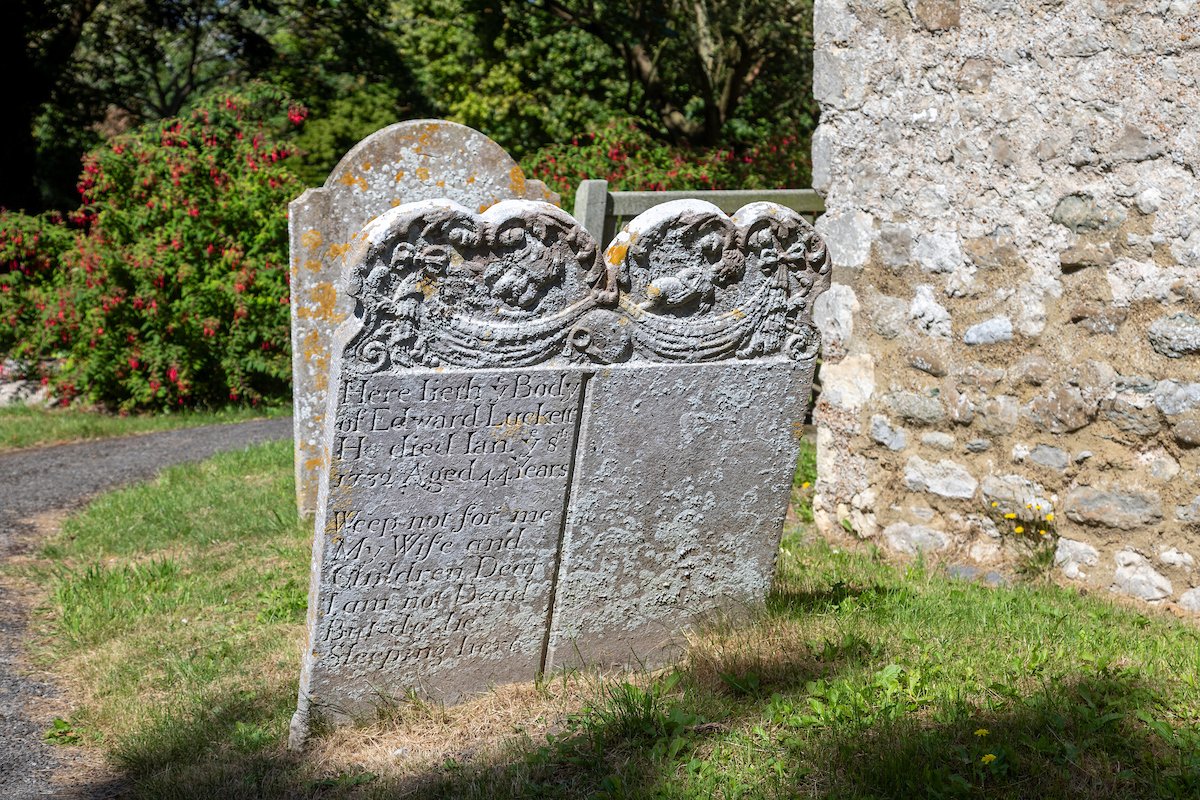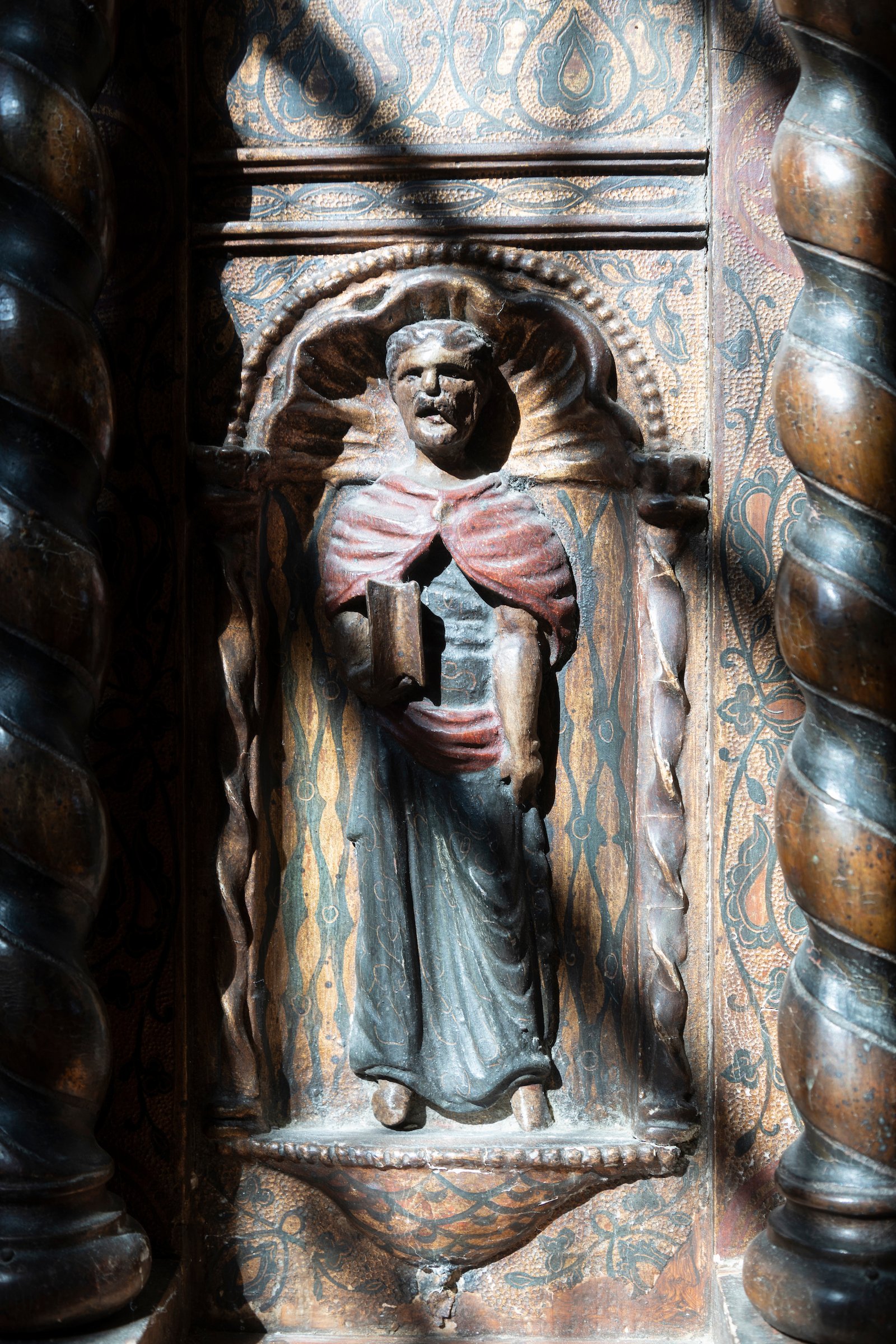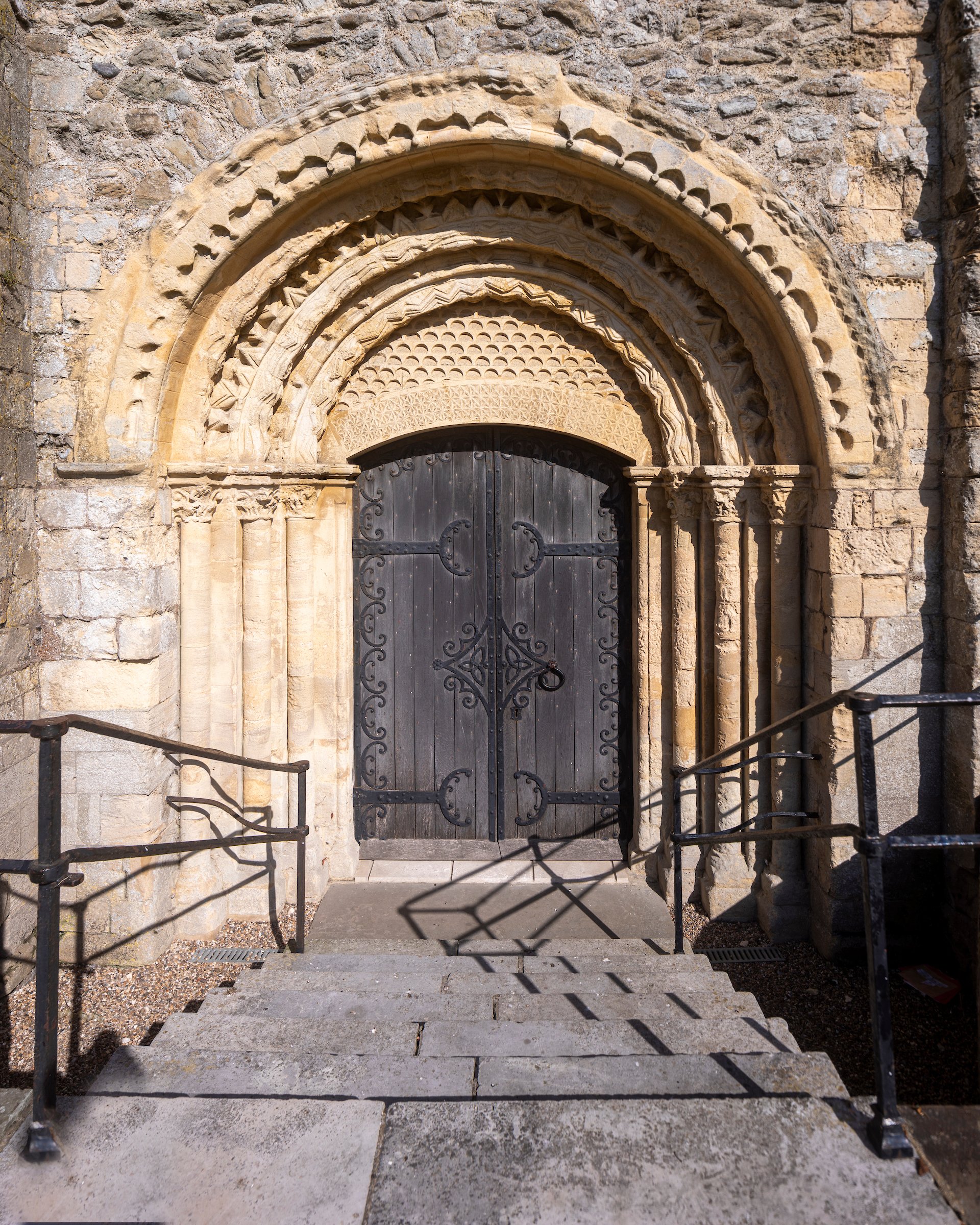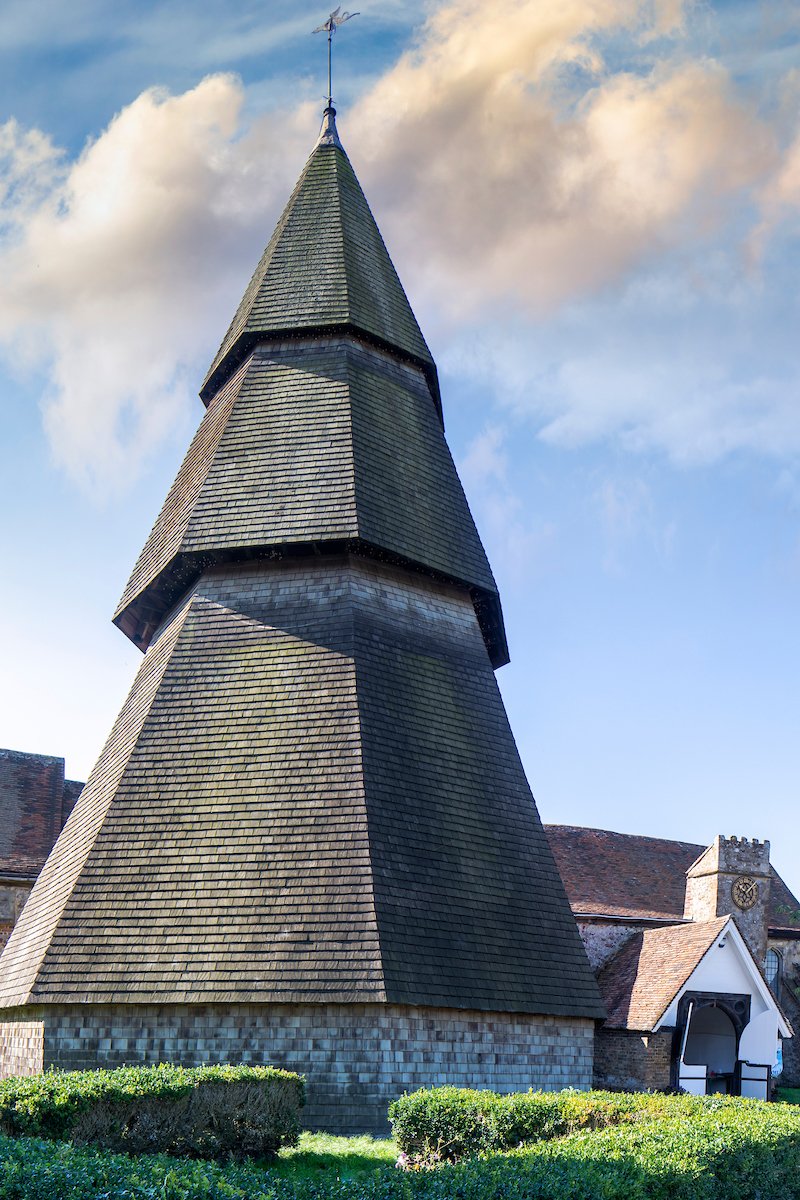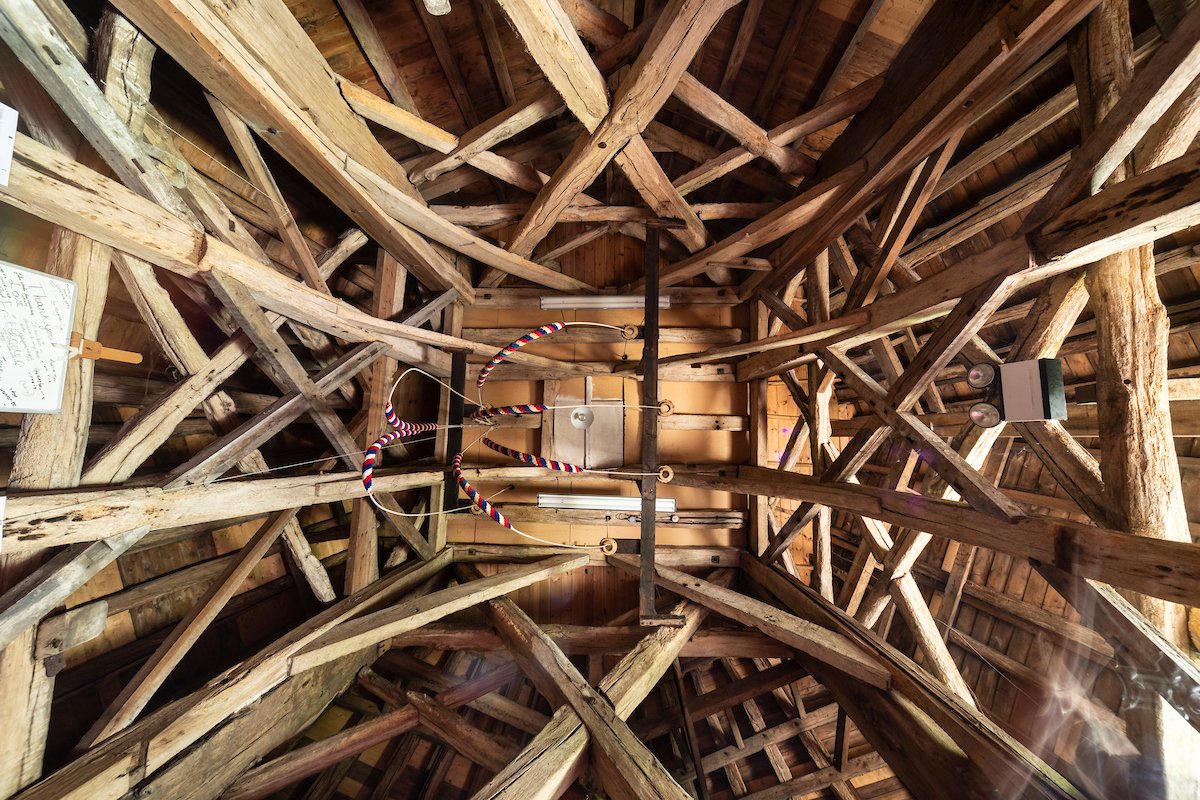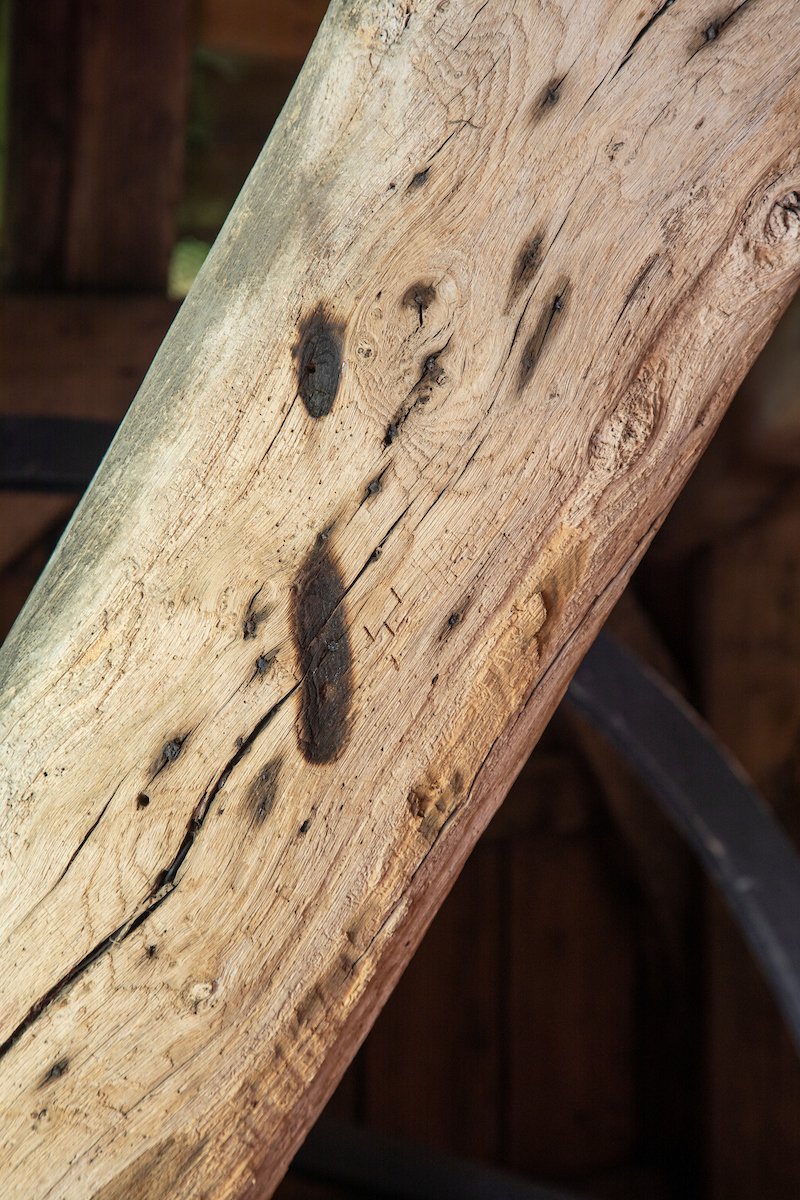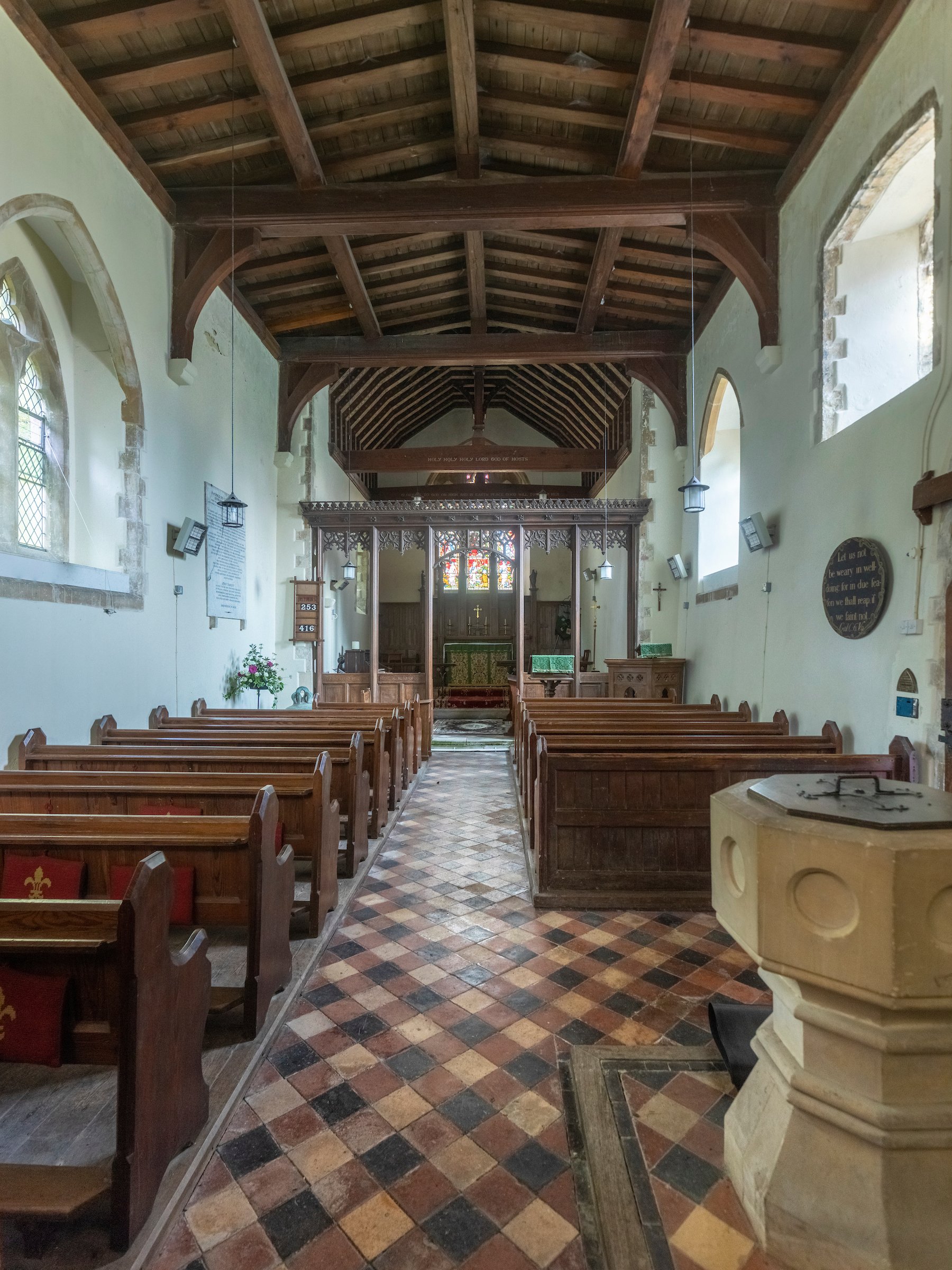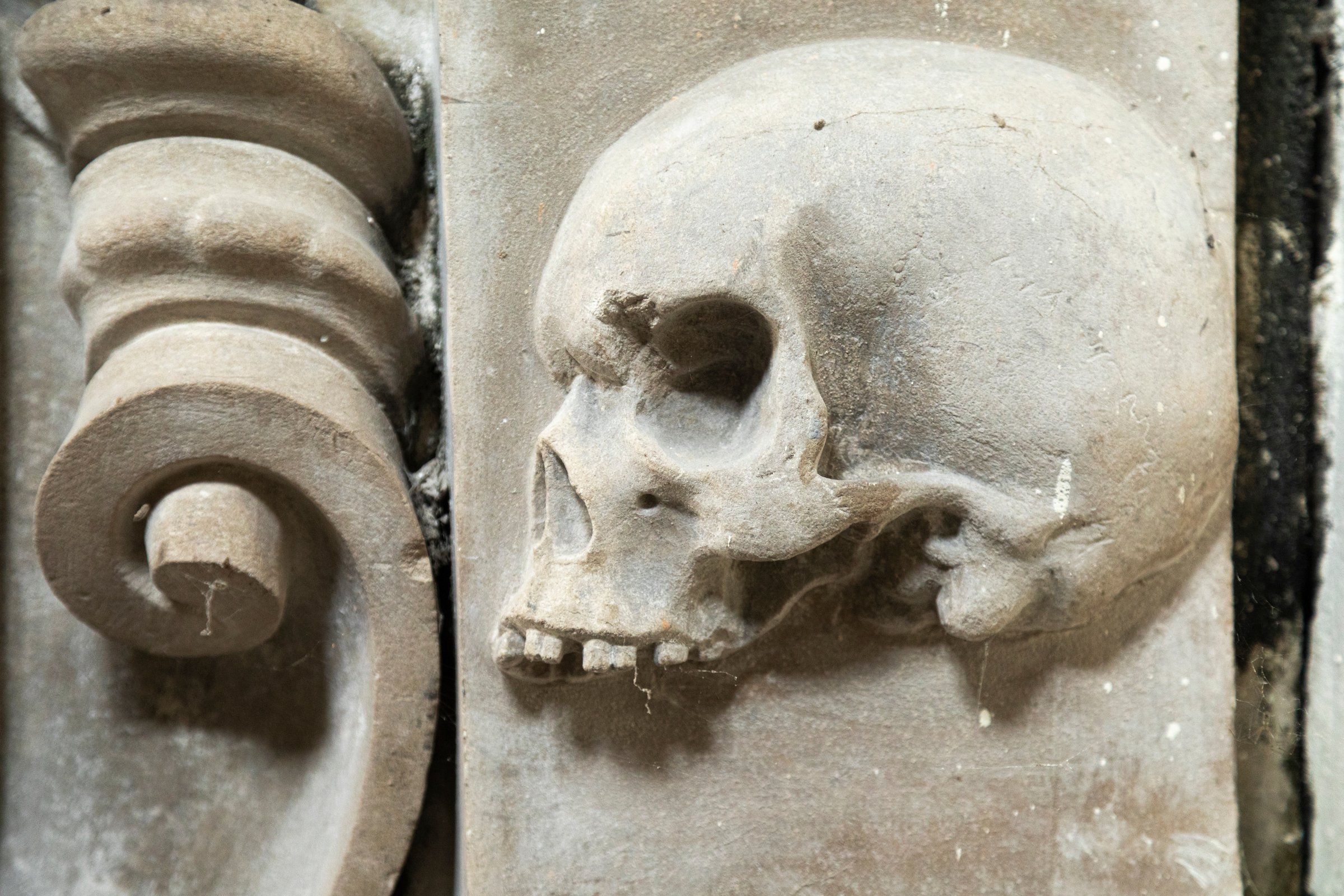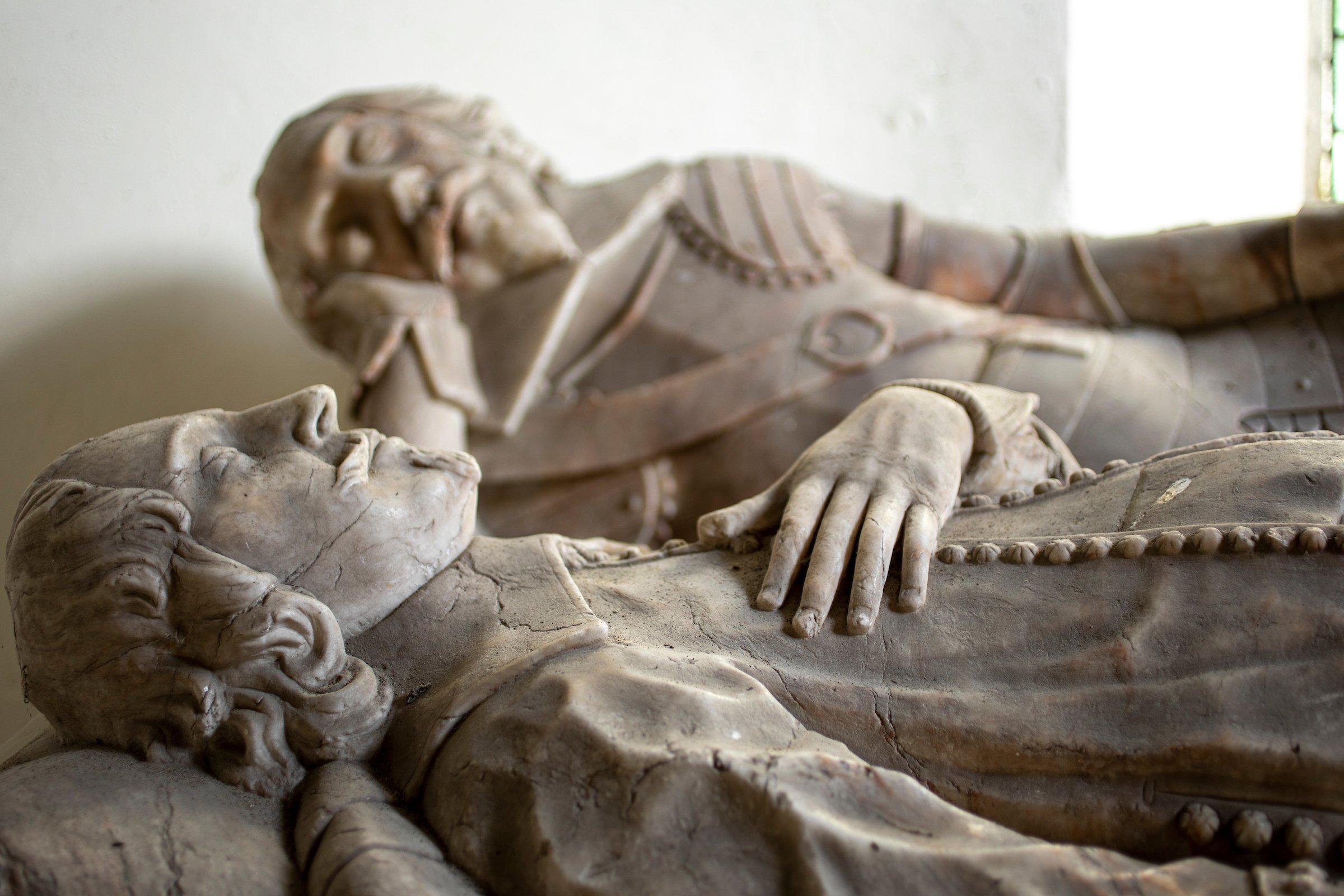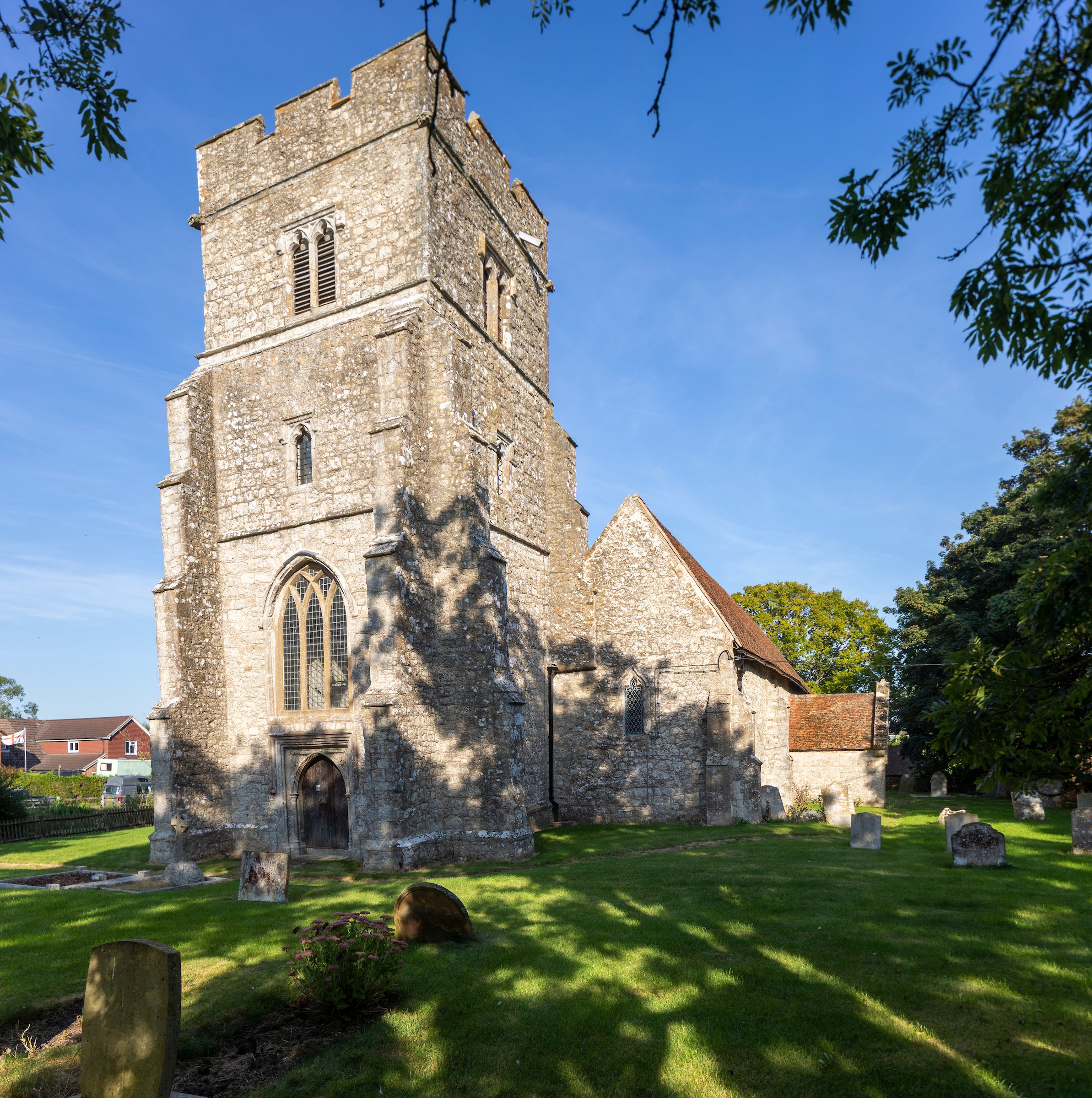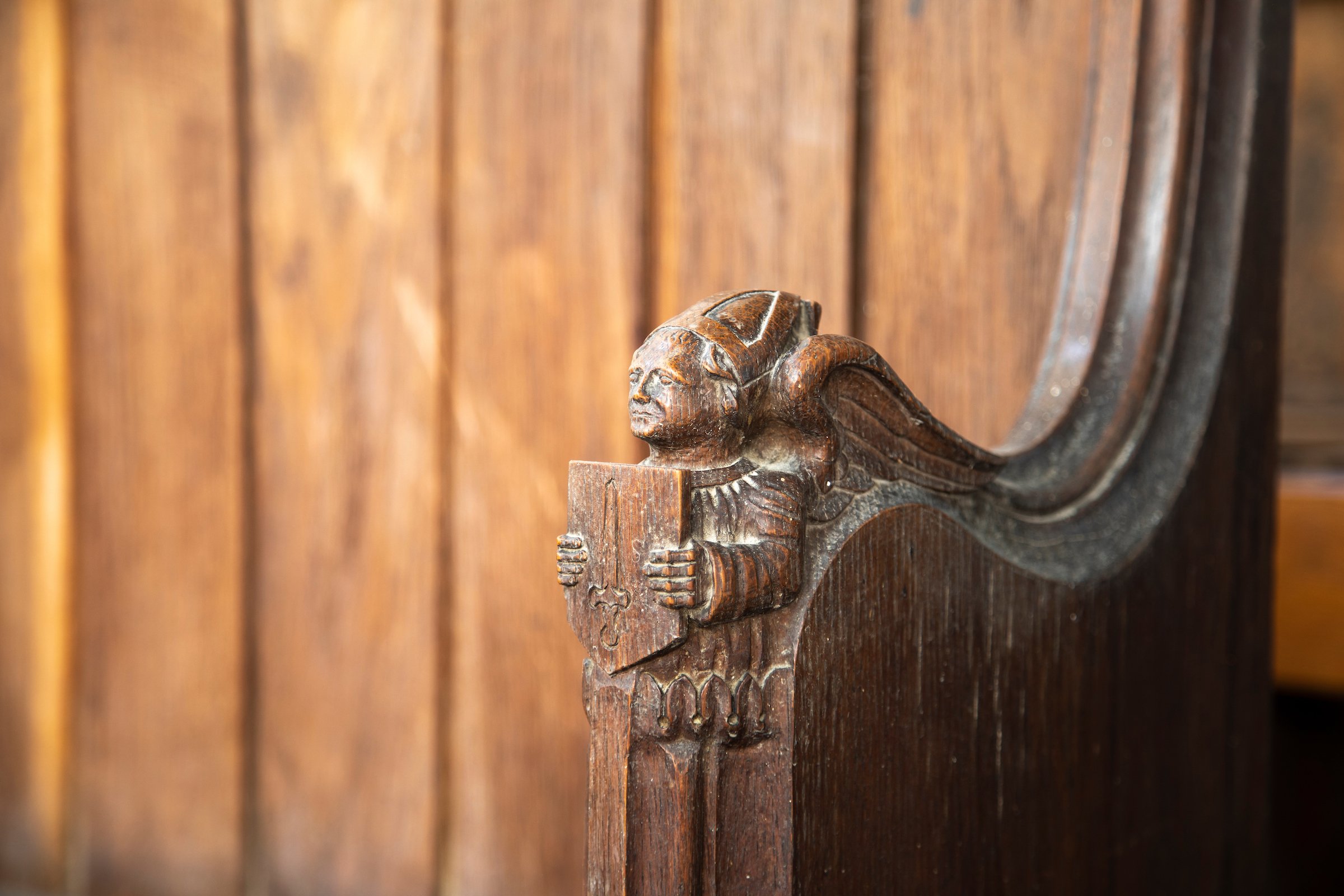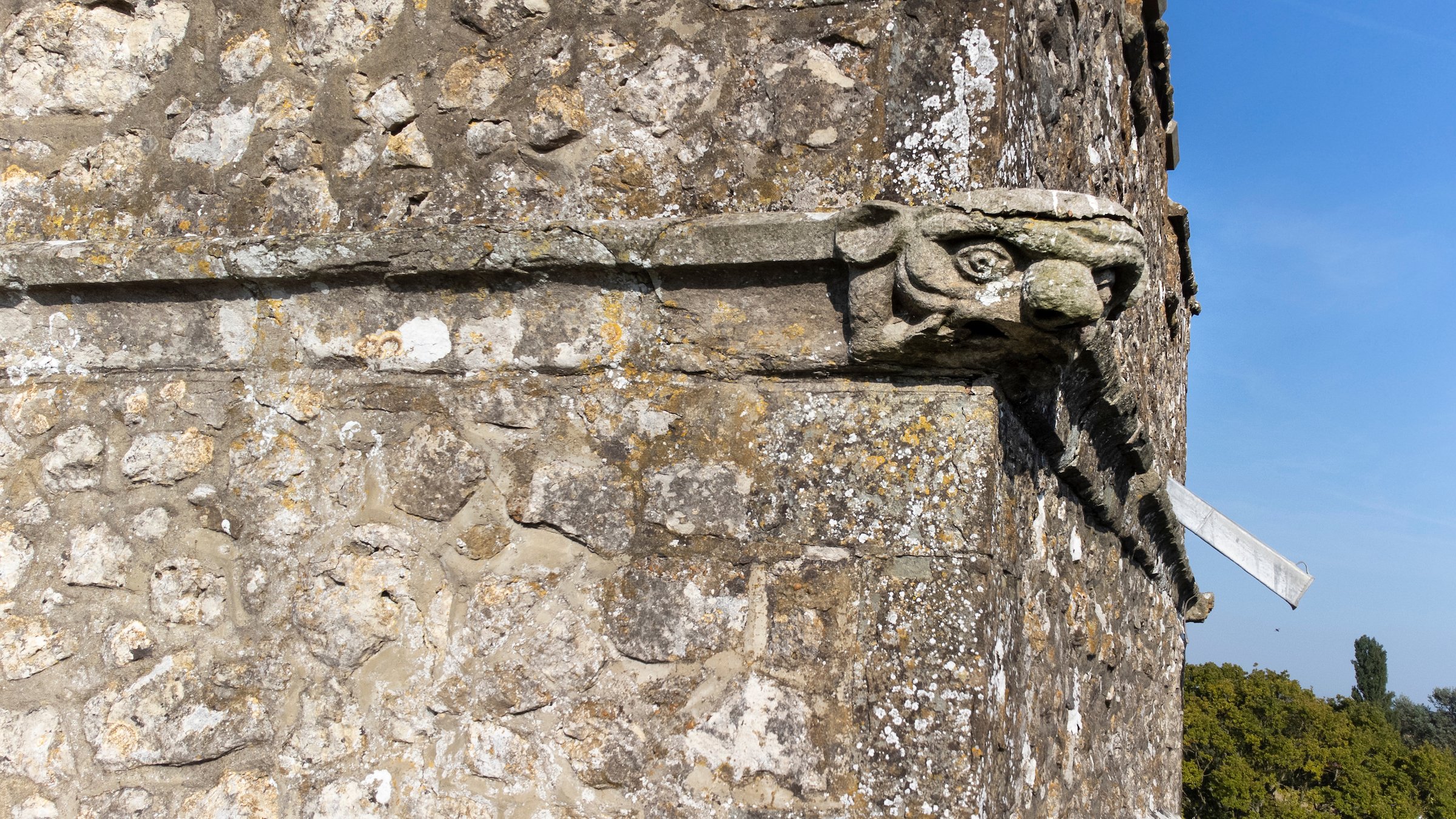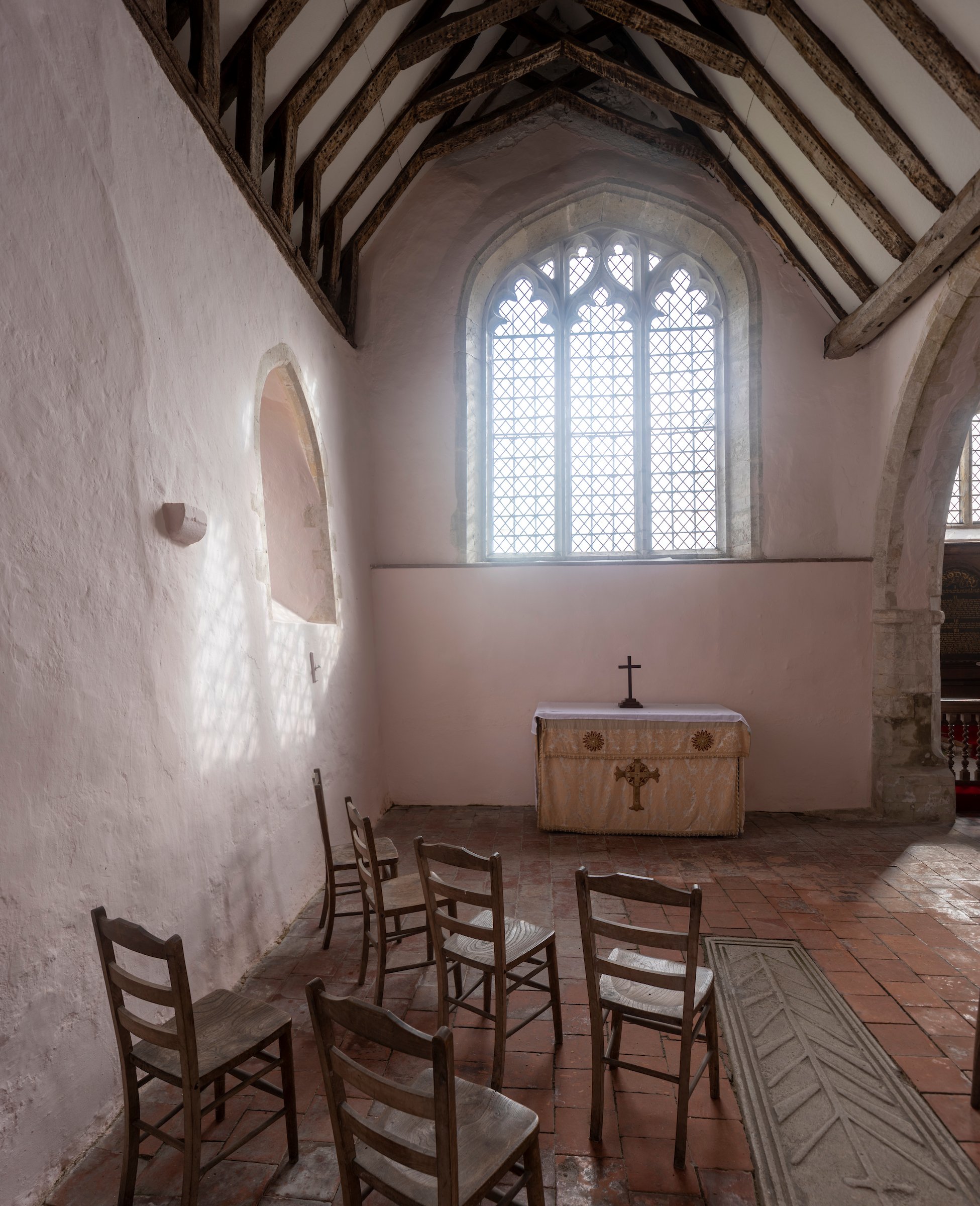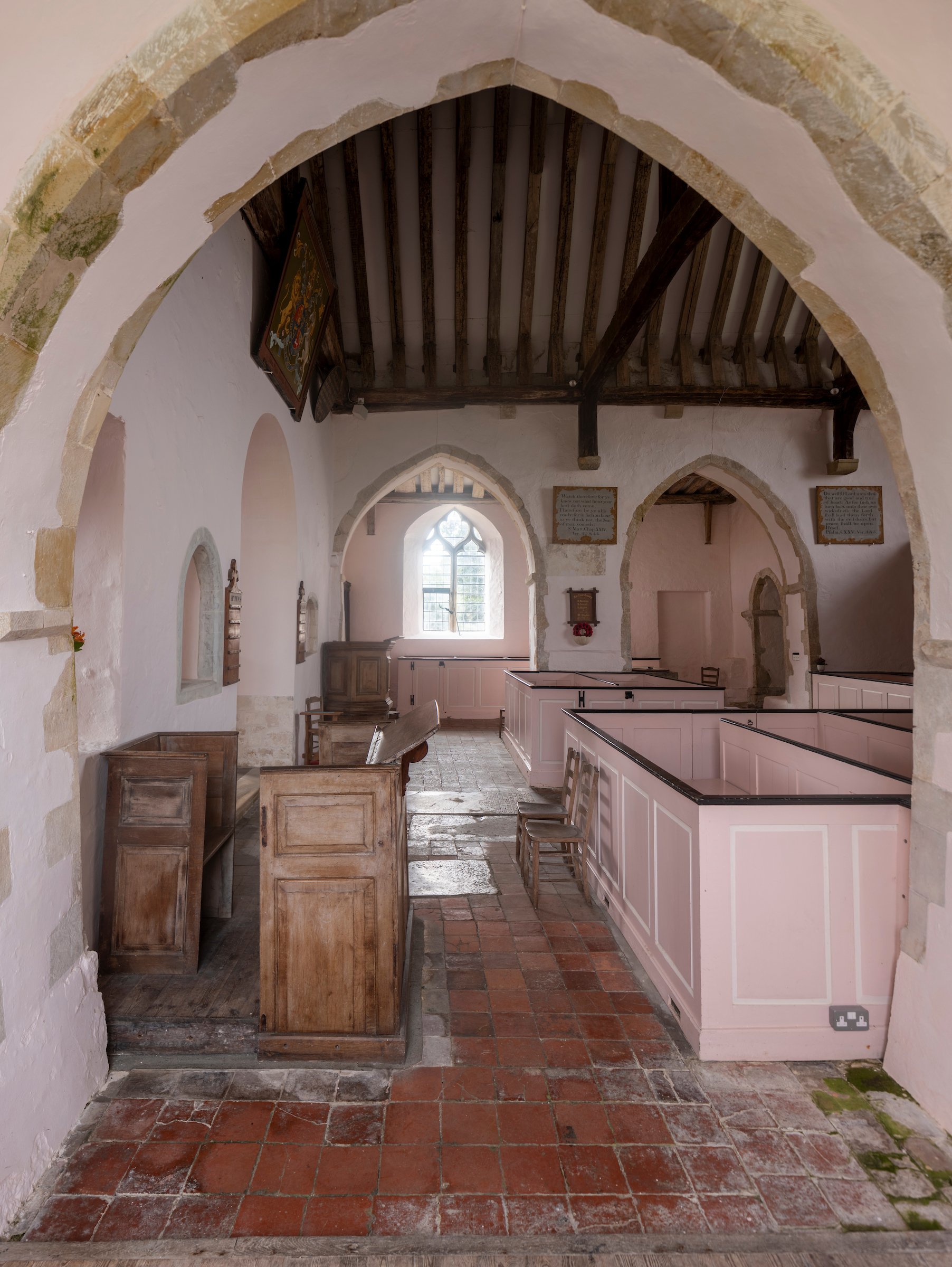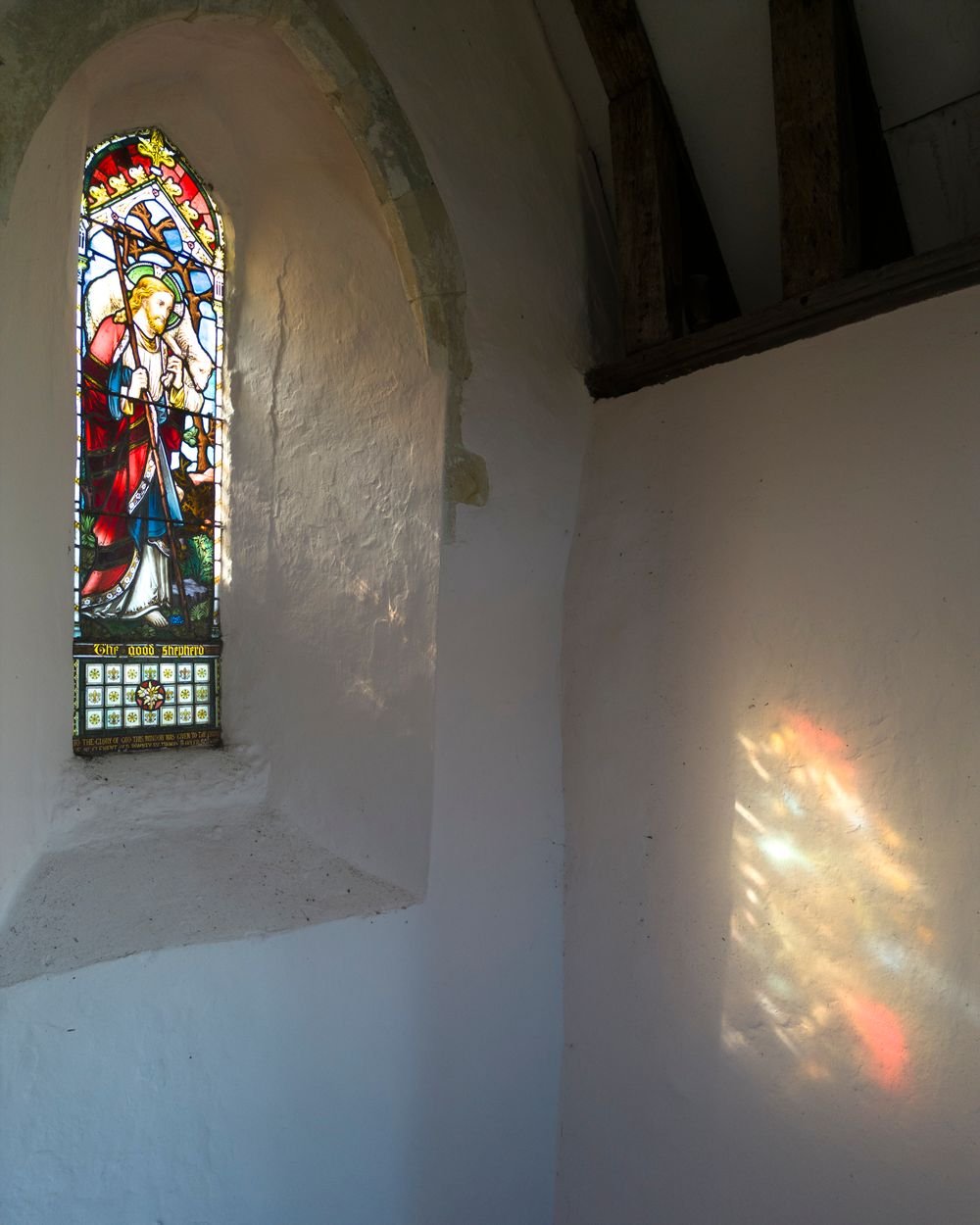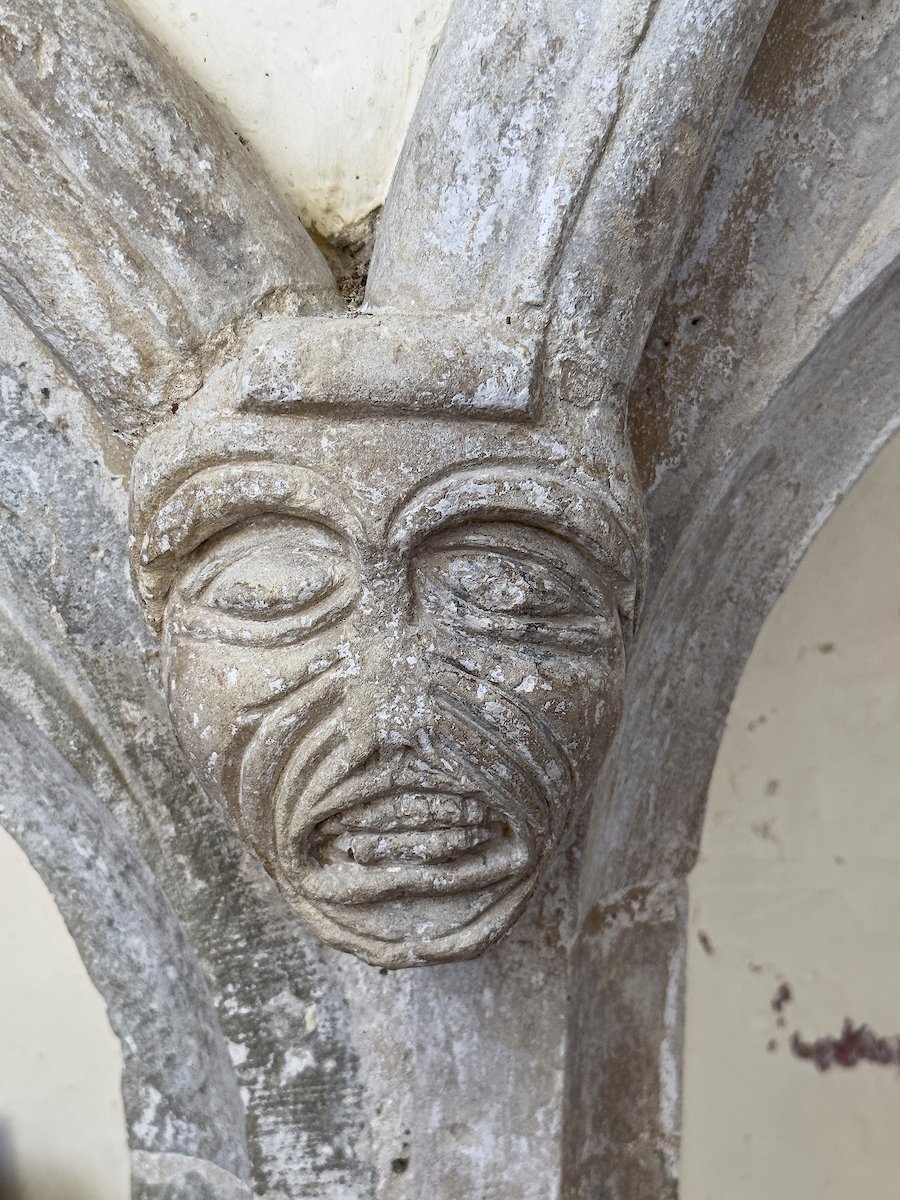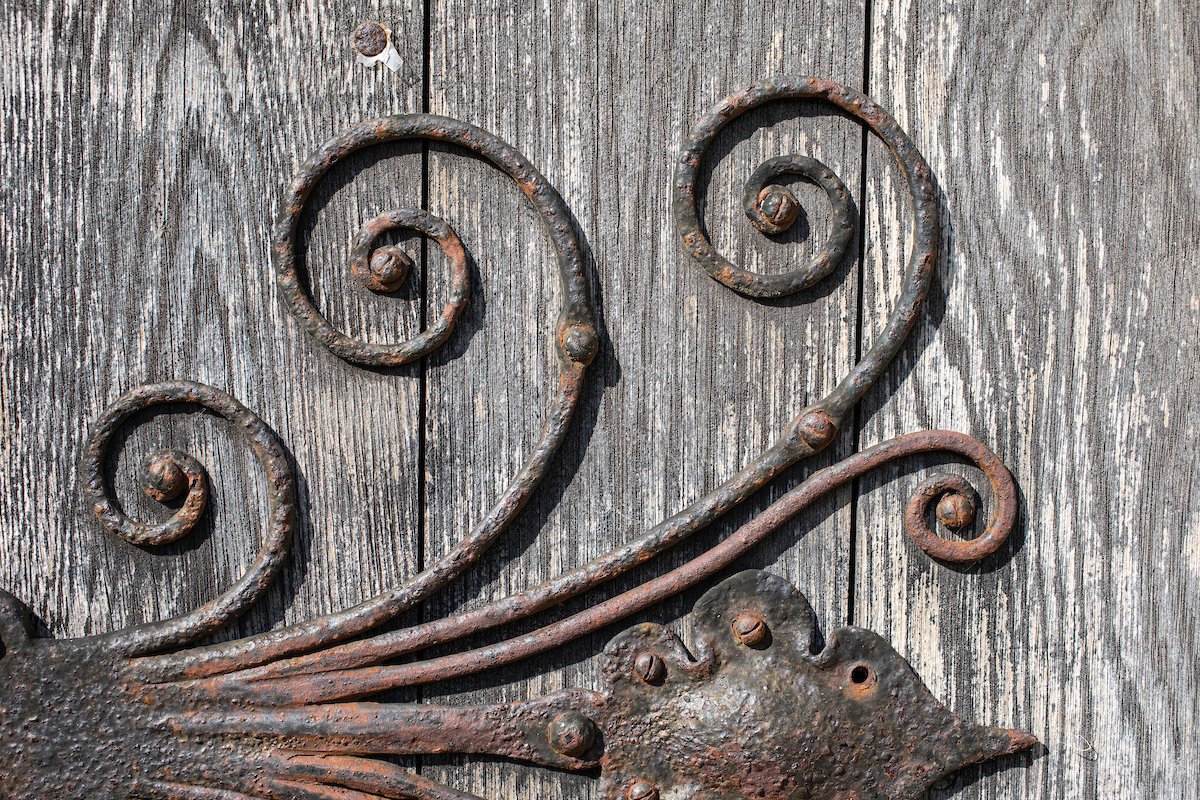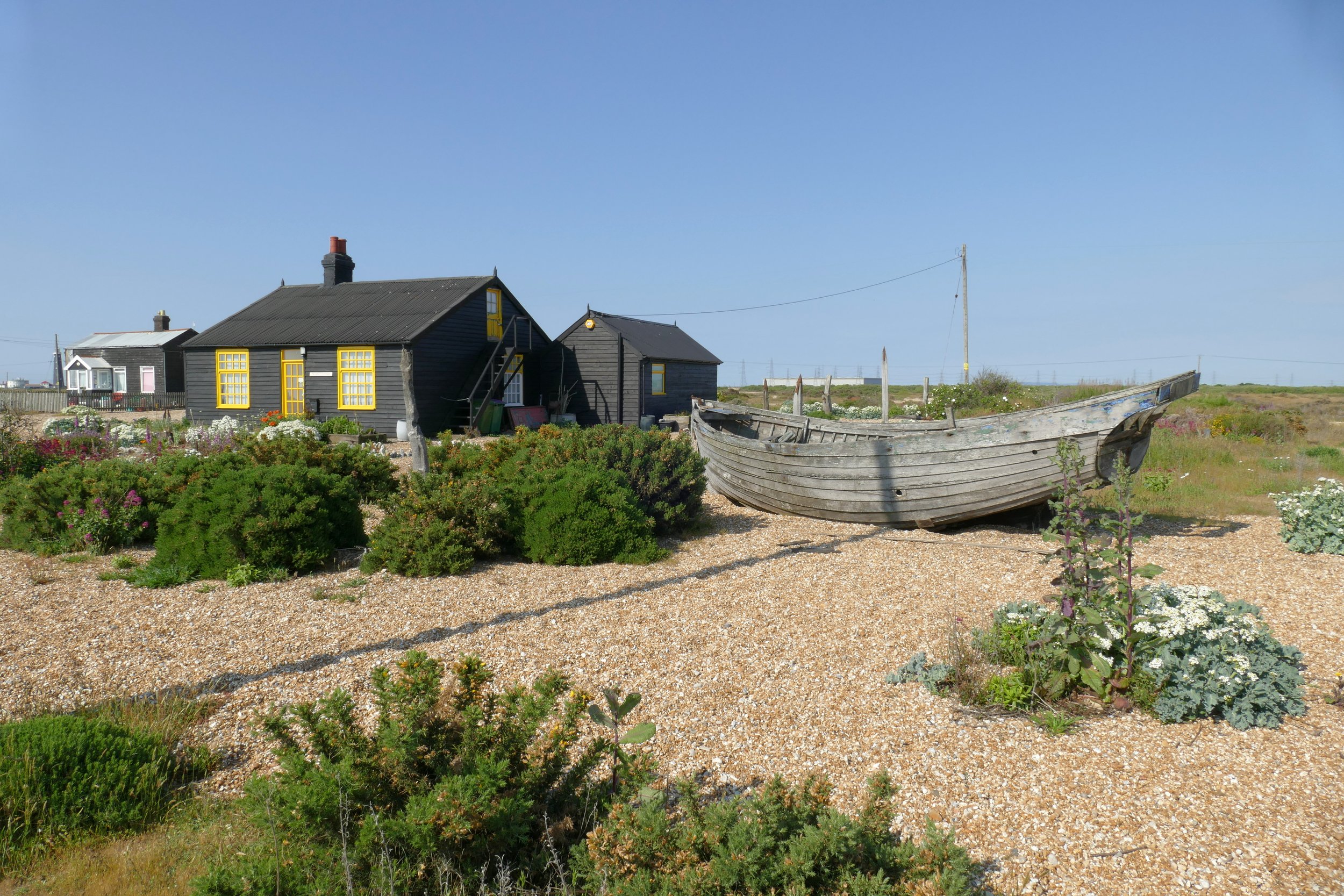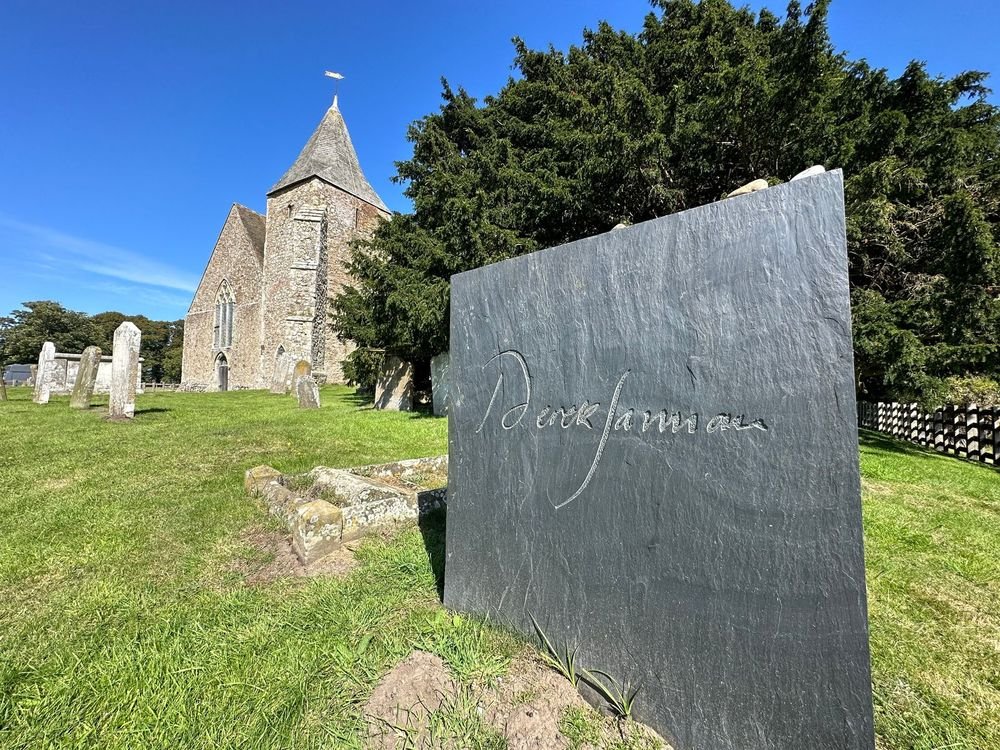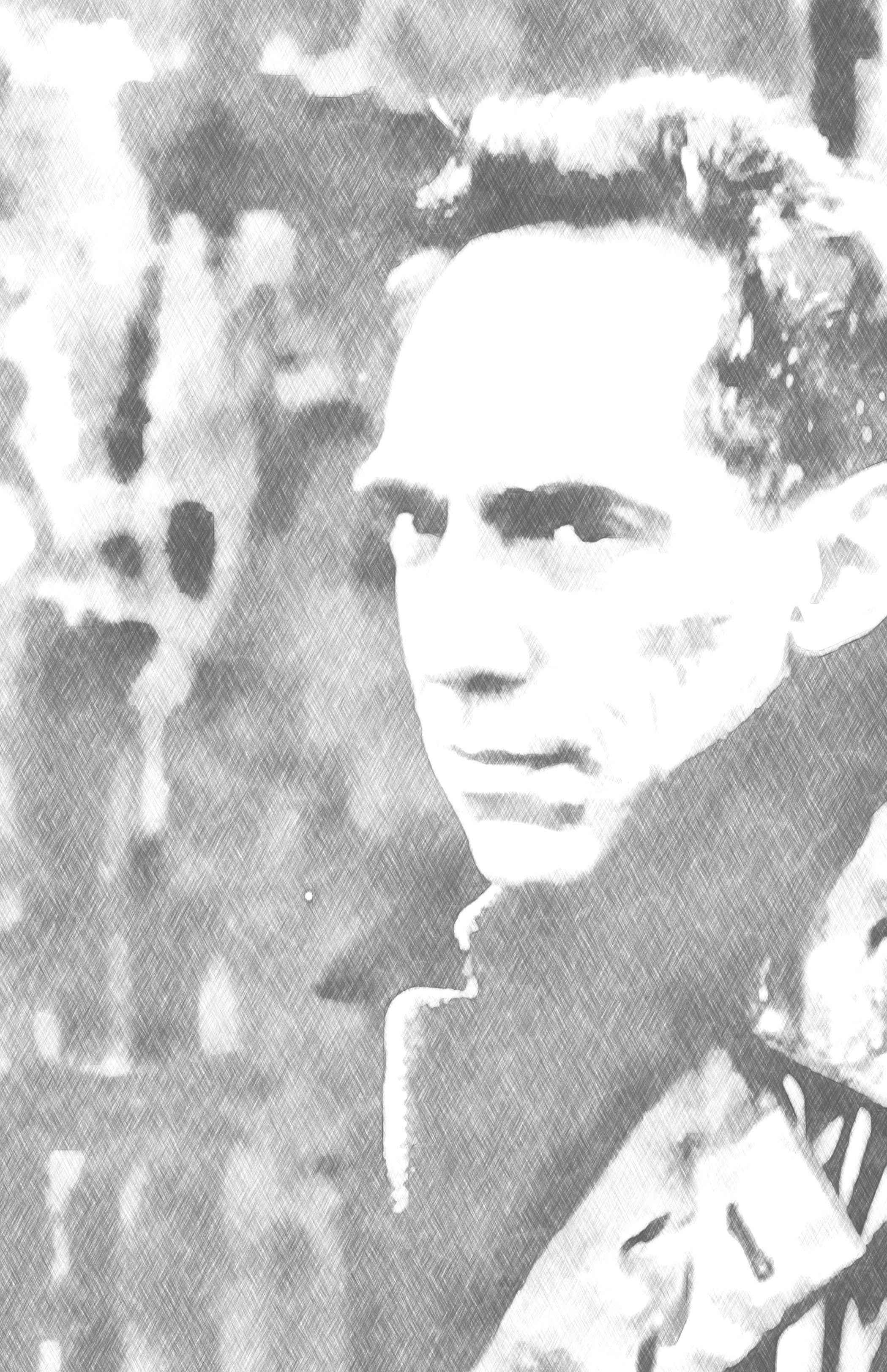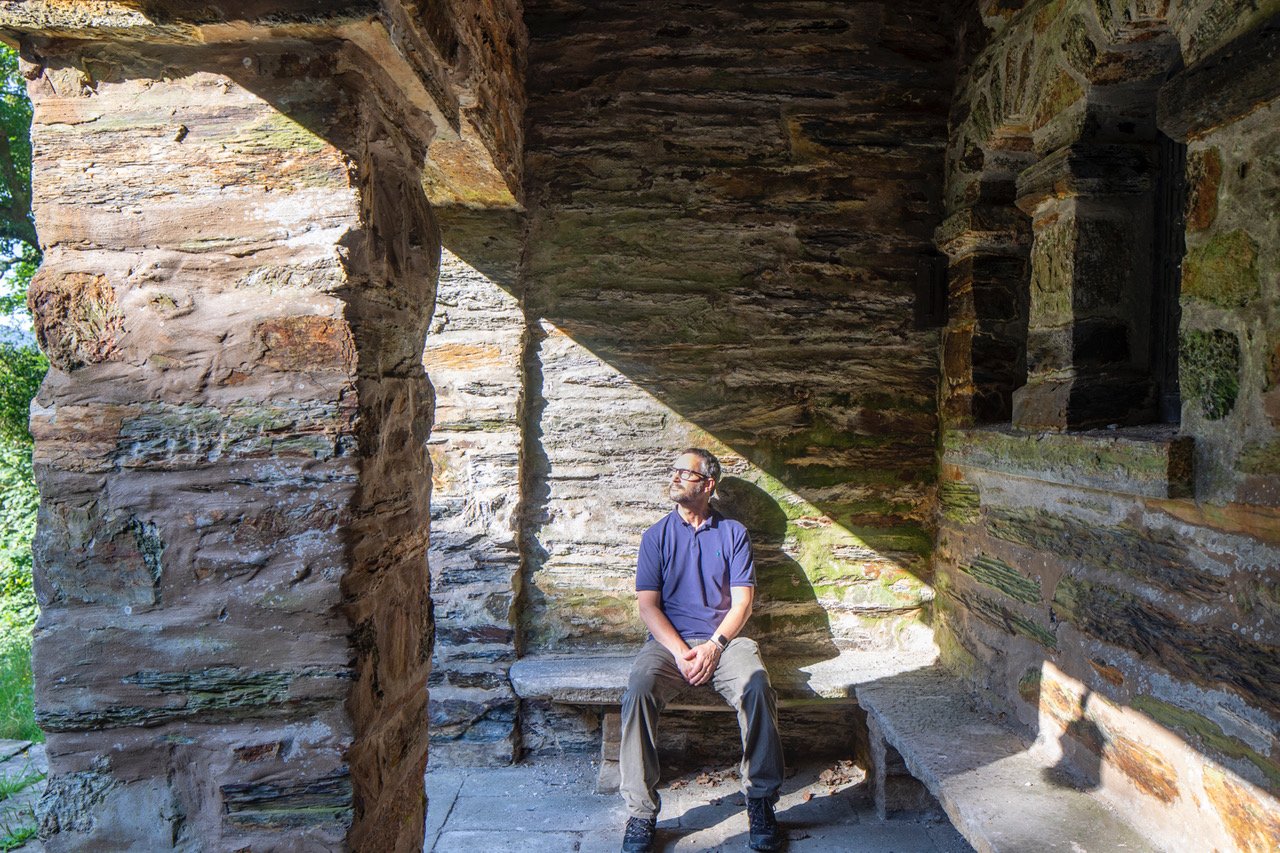Photographing the Romney Marsh Churches
Architectural photographer Andy Marshall took many of the pictures that are published on this website. Andy recently returned to Romney Marsh to take some images of St Mary the Virgin’s Church at St Mary in the Marsh, which was undergoing repair work when Andy first visited back in 2021. During his recent visit, he was also able to capture some spectacular shots of Fairfield church and he revisited some other favourites. Indeed, Andy has now photographed all of the medieval churches on Romney Marsh, along with hundreds of others around the country. Our Project Assistant, Didier Rochard, spoke to Andy following his latest visit.
Andy Marshall has been a photographer for over 20 years. His father was an amateur photographer and helped introduce Andy to the world through the lens.
After studying for a degree in history and literature, Andy took his artistic eye into industry, working as a roofer for the family firm.
“People may not think of roofing as creative, but it gave me a useful understanding of the pathology of a building - the traditional skills used. It helped me look at the details.”
Eventually, Andy became Director of the company. He took his interests further still, studying for a postgraduate degree in Historic Building Conservation. It was after this that he unfortunately suffered some mental health difficulties that would eventually bring him to professional photography. Andy is open about his previous struggles on his website. He sees his experience as a fundamental part of his artistic journey.
“I came to photography after suffering a mental breakdown. Photography saved my life. It drew me away from the darkness. My breakdown led to a change in career and I’ve been a professional photographer for over 20 years. That time has helped me develop a profound understanding of how photography can connect people with place and help them re-connect with things that are meaningful and life-changing.”
In 2010, combining his expertise in historic buildings with his passion for the camera, Andy was commissioned to photograph numerous historic churches for the Churches Conservation Trust. In the years since, the collaboration has involved photographing many different churches, built at different points in history.
“Churches are changed and modified and layered up. But their special position in society means they have a certain way of evolving. They can be a snapshot of a particular period in history.”
Andy mentions St Mary the Virgin’s church at St Mary-in-the-Marsh, which he has recently photographed. The features of this church reveal the post-reformation move from privacy to a more open community connection - visitors can see the entrance to a medieval rood loft cut into the south arcade wall, between the Chancel and the Nave. A flat platform would have once existed here, on top of the rood screen that would have separated the Nave from the Chancel. In medieval times, the Chancel belonged to the priest and the Nave was the public area of the church – a rood screen separated the priest’s sacred rituals from the congregation. Rood lofts were systematically removed at the Reformation and the screens were torn out of many churches.
Andy often engages with “the presence of absence” - the things that have been taken away or omitted and their relationship to the things that have been left behind, whether intentionally or by accident. Once we know what is missing, we are drawn to look more closely at what is left behind and ask why?
“Rural medieval churches are amazing spaces and they’re often empty. They hold vast repositories of art. They contain features which show the context, community, material culture and people of the day – of all the people. They aren’t sanitised like a museum. The artefacts aren’t behind glass or carefully curated. They’re held within the atmosphere of the church, and they contribute to it.”
Andy is the first to admit he’s not religious, but like so many others he finds connection in these ancient places of sanctuary.
“There’s a comfort in their continuity. They feel rooted. They have a strong sense of identity – one which contradicts the modern obsession with immediacy. They are peaceful, quiet places and they are deeply spiritual. Knowing people have worshipped on that same spot for hundreds, if not thousands of years in some cases, leaves a deep impression.”
Andy believes in the power of churches to help understand and connect with other identities - not only the people who use them regularly, but also identities from the past.
“They help us to understand ourselves. Their age brings a wider perspective. Many of the most ancient churches have pre-Christian origins. They were built next to springs, or wells, or special trees, or where important rivers met. Our ancestors worshipped there, and that’s significant.”
The entrance to St. Nicholas’ Church is now below ground level.
We discuss how the churches of Romney Marsh feel connected to the landscape, how the land itself has changed and even moulded to fit around them in some cases - the doorway of St Nicholas’ at New Romney (right), for example, which now lies several feet below ground level after a huge storm in 1287 - the churches that would have originally been built on islands - even the ones lost to nature – the stones that have now been returned to the landscape.
“Sometimes what is exceptional can’t be seen. That’s why the kind of work we’re doing is so important. We’re helping people to understand what is there.”
Andy refers to Walter De Maria's ‘Vertical Earth Kilometer’ at Friedrichsplatz Park in Kassel, Germany. The artwork, installed in 1977, at first could be mistaken for a large blank coin set within a red sandstone square. However, what can’t be seen is that the “coin” is actually the top of a brass rod 5.1cm (two inches) in diameter, which extends 1km into the earth.
“People say that to stand on the spot is transformative, that it brings a perspective on your own life. I think visiting an ancient church can be a similar experience.”
Andy recommends that people should not only take time to look around churches, they should sit within them.
“Visitors sometimes feel uncomfortable in a church, but it’s ok just to sit within the space and take it in. It’s only through being there a while that you can see how the church changes with the light, particularly in a place like Romney Marsh, where the weather can turn in minutes. You only notice that if you sit and watch.”
Andy believes in the power of photography to capture the moments that people may miss and to reveal details in new ways. We discuss the scorch marks from lamps that can be found on timbers inside the wooden belfry at Brookland; places where candles have been lit repeatedly, potentially as part of ancient customs or superstitions. It was only after zooming in on his photos back at the studio that Andy noticed some tiny markings and symbols scratched into the woodwork – apotropaic marks that may have helped avert evil influences or bad luck. Candle marks may be part of an inoculation process against fire, perhaps. Similar scratchings can be found on the nave pillars at St George’s Ivychurch – such marks are often found near doorways and places that need protection.
“I know through my photos that I am capturing things that people further down the line might notice or interpret differently. People may find details that I haven’t. The photos may take on new significance later on.”
The Marsh Churches continue to reveal their secrets, as is evidenced by the Fifth Continent Scheme’s historical and archaeological surveys. We do hope the churches will still be standing for others to enjoy far into the future. Andy’s comment reinforces the importance of the Trust’s mission to keep the churches weathertight and structurally sound.
We are delighted that Andy has now been able to capture all of the marsh churches so splendidly. We discuss his attempts to photograph Fairfield in different weather conditions - to reveal the dramatic expansive skies we experience here on the marsh (as documented in his Genius Loci Digest 1st September). Do any of the other churches stand out for him?
“Each is unique. It could be a small church with a particular atmosphere, or a very large one with lots of details and artefacts. Each has its own story – and I do like the stories! Some of them feel like crossing into a different place entirely – almost like time travel. Burmarsh for example, as you cross the bridge over the dyke – it’s a detached world, full of atmosphere.”
The small church at Burmarsh is sometimes overlooked but Andy has taken some wonderful photos of it nestled among the surrounding trees. Its small footprint illustrates the simple, intimate nature of many of the original Norman churches of Romney Marsh. Sadly, it could also be one of the first churches eventually lost to the sea – at 13 ft below sea level, this is the lowest of the Marsh churches, in its elevation.
Do any other churches stand out to Andy?
“Brookland obviously, with its freestanding wooden tower - it’s a vernacular monument to the common people... East Guldeford for its simplicity and openness... Brenzett, for the Fagge monument. It reveals the enormous privilege of certain sections of society - to occupy such a large and prominent space in such a small church. It also reveals the fashions of the day in the clothing the two men are wearing. When the sun falls on it through that window, the statues seem to come alive!”
Andy is not the first person to suggest the Fagge monument comes alive – it is, after all, the inspiration for E. Nesbit’s ghost story, Man-Size in Marble!
Andy thinks through the churches in his mind. Clearly, its proving quite a difficult question, given the beauty and history of these ancient buildings.
“Oh, Newchurch! The view as you turn that corner – it’s just completely unexpected and wonderfully out of proportion with everything else around it. All those wood carvings inside are absolutely incredible.”
Surely, he must have a favourite?
“Well… it’s probably got to be Old Romney... For all its honeycomb pockets of peace. It’s not just got incredible features and history, or how it looks across the fields from far away…. it was the experience I had there while I was sitting waiting for the light to change. Something totally intangible. I watched the Good Shepherd lift out of the stained glass and travel down the wall as the sunlight came in... it really did feel like something else was there in that place. That’s why my photography blog is called Genius Loci, in fact - there’s something intangible in places like this, something greater than the sum of its parts. Perhaps there’s more than meets the eye.”
Andy has now visited so many churches across the country, I wonder if he feels the Romney Marsh churches are special in any way?
“Oh, of course! They are fascinating and beautiful places. And they’re also easy to visit. I can’t think of anywhere else in the country where churches like that are so close to each other. They are related, but they are all entirely different. You can walk or cycle between them. Many even have great pubs next door!”
Andy talks about the “levels” of churches – the intentional architecture and the features we might expect to find in buildings from a given period in history, but also the “accidental monuments”. The monuments to the craftspeople that produced them.
“A door latch or a stone face – we often don’t know who produced them. We don’t know their story. And they can be masterpieces of technology for their time. The crown-post roofs that so many of the marsh churches have, for example – they’re at the zenith of carpentry and craft. You can appreciate the churches as beautiful things in themselves, but there’s also a world of creativity within the details. People just need to stop and look, and then find something that inspires them.”
Andy discusses the inspiration he felt standing in the same spot where John Piper painted at Fairfield. He has been interested in John Piper for a long time.
“I’m definitely not the first to find the Marsh Churches creatively inspiring. So many writers and other creatives have taken an interest in these places. They’re clearly very special.”
The Trust offers postcards of John Piper’s paintings of the Marsh Churches for sale here.
Andy finishes by speaking of the reassurance that people can find in the churches for all faiths or none.
“To me, the age of the buildings and the stories they contain show that, above all else, people have managed with their circumstances and survived. They have managed! Despite the circumstances of whatever period of time they were in and the harsh conditions out there on the marsh. All those little details and artefacts and marks – they are things that will endure. There’s a continuity, and that brings hope.”
Returning to Andy’s favourite church, we discuss Derek Jarman’s grave at Old Romney – now adorned with shells and decorations which have been placed there by followers of Jarman’s work after pilgrimaging to nearby Prospect Cottage and his final resting place.
“In the book Modern Nature, which Jarman wrote at Prospect Cottage after his HIV diagnosis, he mentions the tall tower of All Saints’ at Lydd, which disappears and reappears as the marsh mists come and go. Here’s a man faced with death and the book is profoundly honest about that. He’s at a liminal point in life, full of uncertainty. He’s in a small wooden cottage next to a huge nuclear power station out there on the shingle, and exposed to all the weather that blows in straight off the sea. Why mention the tower of All Saints?.. I believe it’s because he is rooting himself to the landscape. He’s rooting himself to what feels permanent and enduring, given what he knows is to come. He knows the church was there before him and he knows it will be there after him. So there’s a comfort in that place.”
Given the struggles that brought Andy to photography in the first place, these words have a particular significance. They remind us why the mission of the Romney Marsh Historic Churches Trust is so important – to keep the windows, walls and roofs weathertight. Not just to conserve these irreplaceable historic buildings, but because of what those buildings mean to people. People from all walks of life, who can find something special in them.
I finish with a quote from Andy’s website, which resonates.
“The photographs on display have all been a part of my journey to light - little antidotes against the darkness. Each photograph has a story that is woven into the composition. It includes my story; the story of genius loci - the spirit of place; and, hopefully, your story too.”
Andy Marshall
Where to next?
Help preserve the medieval churches for future generations: Become a member; Make a donation; or Volunteer with us.
Learn more about the churches with our Church Audio Tour App.
Read about Andy’s time on Romney Marsh in his Genius Loci Digest 1st September (Scroll to Part Two). Includes additional photos and videos from “behind-the-scenes”.
Author: Didier Rochard



